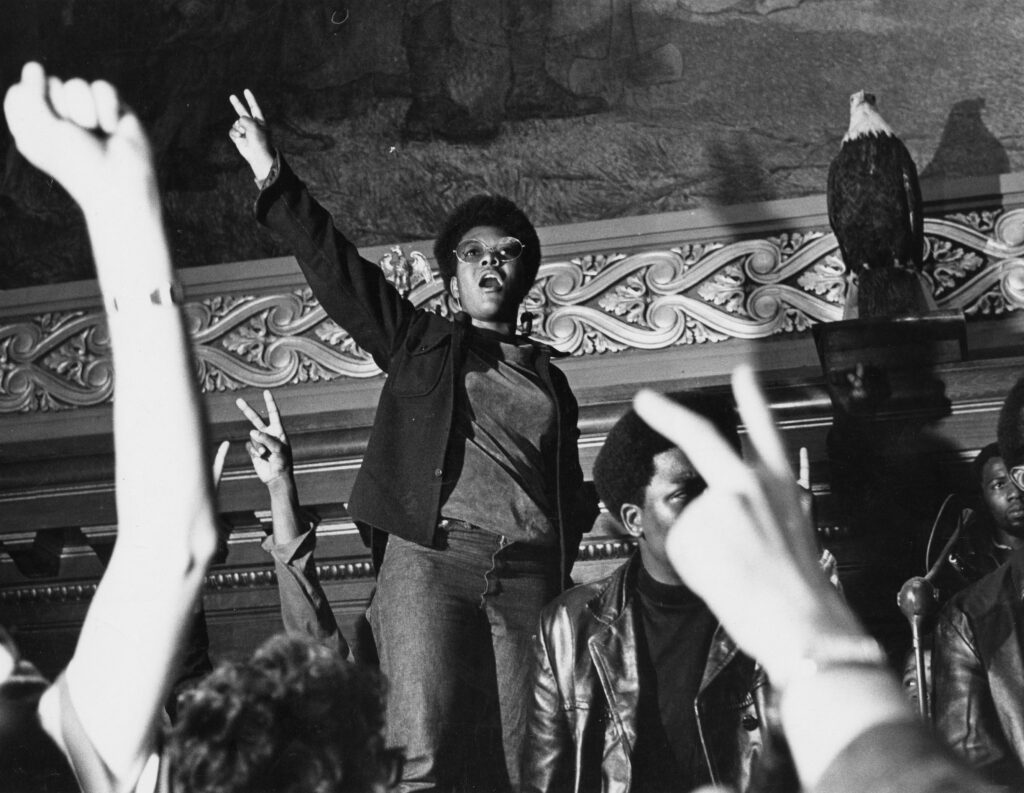The struggle for belonging on campus—in social organizations, housing, athletics and more—will be illuminated in the exhibition Sifting & Reckoning: UW–Madison’s History of Exclusion and Resistance.
Presented by the University of Wisconsin–Madison Public History Project, the exhibition will be a powerful examination of 150 years of struggle and perseverance on campus when it goes on view Sept. 12–Dec. 23, 2022 at the Chazen Museum of Art.

A student leads a Black Power rally at the Wisconsin state Capitol, circa 1969. UW Digital Collection
The UW–Madison Public History Project is an initiative started in 2019 by Chancellor Rebecca Blank to uncover and give voice to the histories of discrimination, exclusion and resistance at the university. The project will make its research accessible to the public through the exhibition at the Chazen, as well as through an exhibition website, curricular materials, events and more.
“More and more, powerful institutions of higher education are recognizing the need to reckon with their past,” says Kacie Lucchini Butcher, the director of the Public History Project and curator of Sifting & Reckoning. “This exhibition is groundbreaking because of its focus on the history of discrimination and resistance on our own campus, and not only on ties to outside events. It’s an opportunity for us to reflect on what happened here at UW–Madison so that we can better understand what we need to do in order to create a more equitable future.”
In Sifting & Reckoning, visitors will explore the various experiences of marginalized students told through objects from more than a century of life on campus, rarely displayed artifacts pulled from UW Archives.
They include the Pipe of Peace, a ceremonial object used by white students in a popular mock Native ceremony. They also include protest flyers, created by students fighting against racism and posted across the campus; buttons and athletic memorabilia; yearbooks; and photographs and film. Recorded oral histories, available on the project’s website, will also shine a light on more than a century of struggle and perseverance. The exhibition will include interactive opportunities for visitors to reflect and discuss the complicated histories presented.
Broadly, the intent of the project is to ensure that students and alumni are aware of the full history of the university, including the accomplishments of campus community members from marginalized populations whose stories previously may have been hidden or not widely known.
“We are proud to partner with the UW–Madison Public History Project and to be the space for this extremely important exhibition,” says Amy Gilman, director of the Chazen. “Understanding and recognizing our own history as a campus is an important part of the work to build more inclusive and representative spaces.”
In addition to Lucchini Butcher, the exhibition is co-curated by Taylor Bailey and Adriana Arthur, graduate student researchers and curatorial assistants; the Public History Project Steering Committee; and collaborative partnerships with student groups, community partners and campus stakeholders.
The UW–Madison Public History Project was made possible with support and funding provided by the Office of the Chancellor.